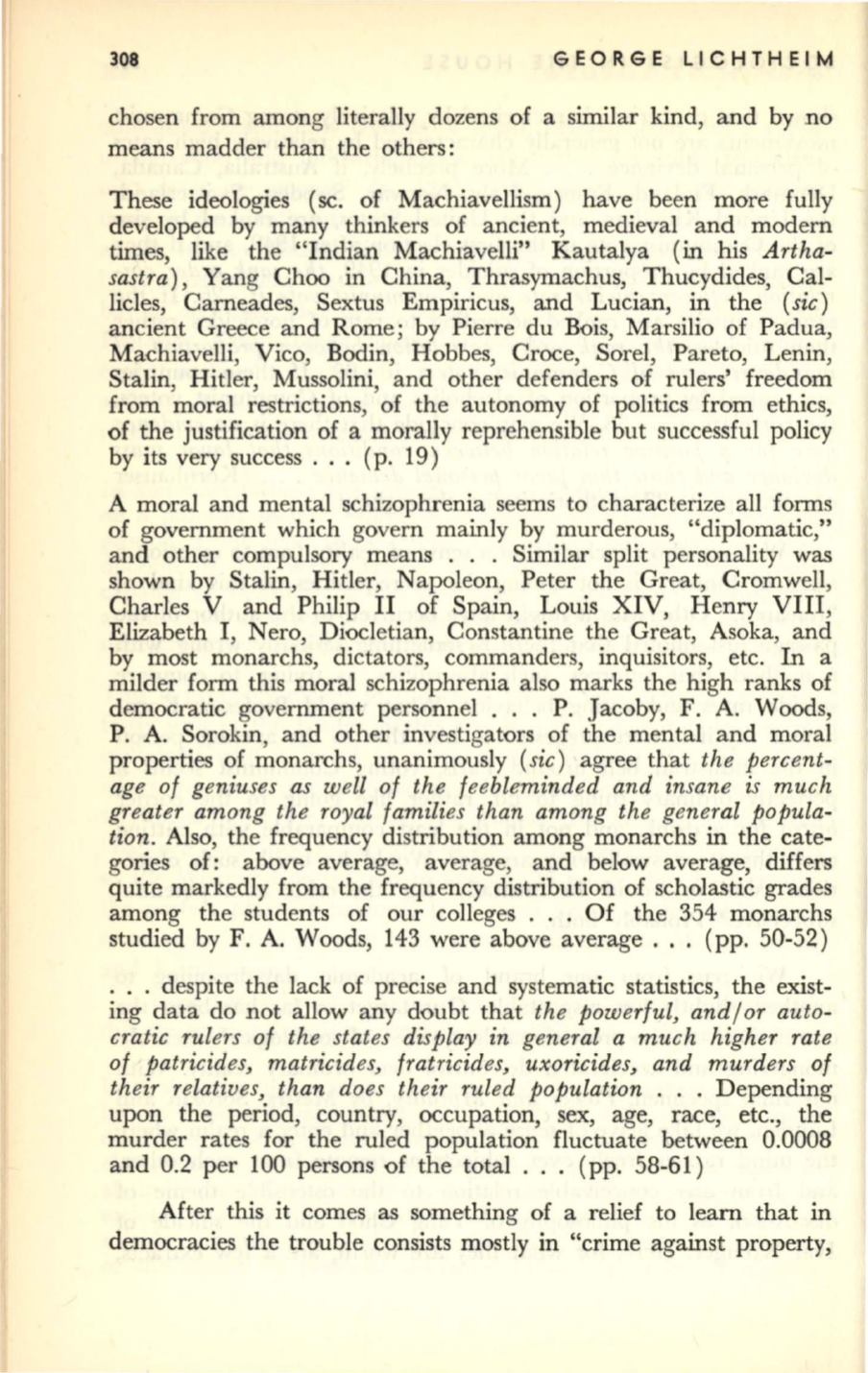
308
GEORGE LlCHTHEIM
chosen from among literally dozens of a similar kind, and by no
means madder than the others:
These ideologies (sc. of Machiavellism) have been more fully
developed by many thinkers of ancient, medieval and modem
times, like the "Indian Machiavelli" Kautalya
(in
his
Artha–
sastra)
,
Yang Choo in China, Thrasymachus, Thucydides, Cal–
licles, Carneades, Sextus Empiricus, and Lucian, in the
(sic)
ancient Greece and Rome; by Pierre du Bois, Marsilio of Padua,
Machiavelli, Vico, Bodin, Hobbes, Croce, Sorel, Pareto, Lenin,
Stalin, Hitler, Mussolini, and other defenders of rulers' freedom
from moral restrictions, of the autonomy of politics from ethics,
of the justification of a morally reprehensible but successful policy
by its very success . . . (p. 19)
A moral and mental schizophrenia seems to characterize all forms
of government which govern mainly by murderous, "diplomatic,"
and other compulsory means . . . Similar split personality was
shown by Stalin, Hitler, Napoleon, Peter the Great, Cromwell,
Charles V and Philip II of Spain, Louis XIV, Henry VIII,
Elizabeth I, Nero, Diocletian, Constantine the Great, Asoka, and
by most monarchs, dictators, commanders, inquisitors, etc. In a
milder form this moral schizophrenia also marks the high ranks of
democratic government personnel .. . P. Jacoby, F.
A.
Woods,
P.
A.
Sorokin, and other investigators of the mental and moral
properties of monarchs, unanimously
(sic)
agree that
the percent–
age of geniuses as well of the feebleminded and insane
is
much
greater among the royal families than among the general popula–
tion.
Also, the frequency distribution among monarchs
in
the cate–
gories of: above average, average, and below average, differs
quite markedly from the frequency distribution of scholastic grades
among the students of our colleges . . . Of the 354 monarchs
studied by F.
A.
Woods, 143 were above average ... (pp. 50-52)
. . . despite the lack of precise and systematic statistics, the exist–
ing data do not allow any doubt that
the powerful, and/or auto–
cratic rulers of the states display in general a much higher rate
of patricides, matricides, fratricides, uxoricides, and murders of
their relatives, than does their ruled population
. . .
Depending
upon the period, country, occupation, sex, age, race, etc., the
murder rates for the ruled population fluctuate between 0.0008
and 0.2 per 100 persons of the total . .. (pp. 58-61)
After this it comes as something of a relief to learn that
in
democracies the trouble consists mostly in "crime against property,


